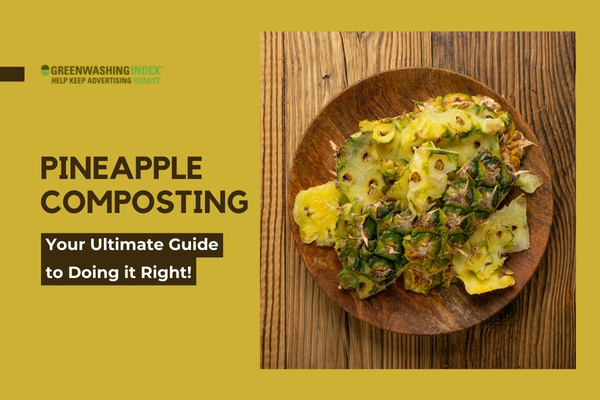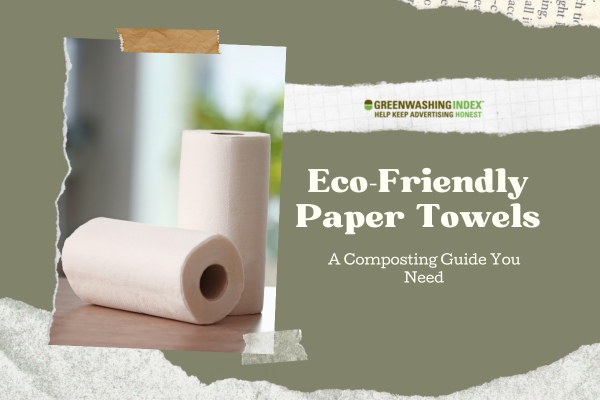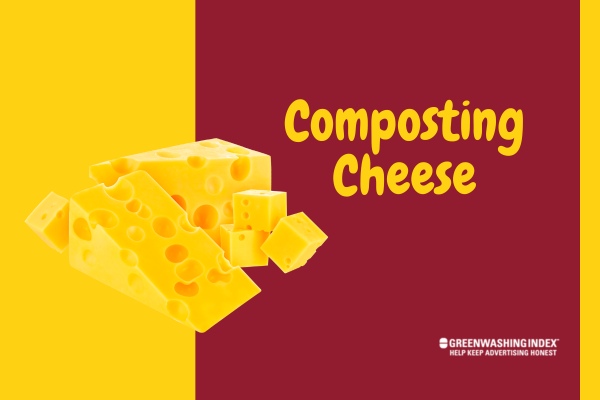Can you ever resist those sweet, tangy bites of a perfectly ripe pineapple? I know I can’t! But once all that sweetness has been devoured, what’s next for the not-so-luscious parts like the hardcore and prickly peel? If you think just about throwing them into the trash, hold on! How about giving “pineapple composting” a try?
It’s a simple act that can make a significant positive difference for our environment – in reducing food waste and providing nutrient-rich soil amendment for your plants.
Yes, you heard it right! Pineapples can be composted. By introducing this delicious fruit’s scraps into your organic waste recycling routine, you’re not only responsibly disposing of your kitchen scraps but also invigorating your garden soil with essential nutrients needed by plants.
A Glimpse of What Awaits You Here
- Key benefits of compostable pineapple waste
- A walkthrough guide to successful pineapple composting
- Expert tips to speed up the pineapple decomposition process
- The must-know dos and don’ts when adding pineapples to your pile
- Dissecting myths around composting fruit peels in gardens
Why Pineapple Composting Matters?
Of course, we all love to savor the sweet and tangy taste of a ripe pineapple. But what happens to the remains? Often, they find their way into landfills, contributing to unnecessary waste. However, I have always found that pineapple composting provides an eco-friendly solution not just for disposal but also for enriching my little green space at home. Therein lies its importance.
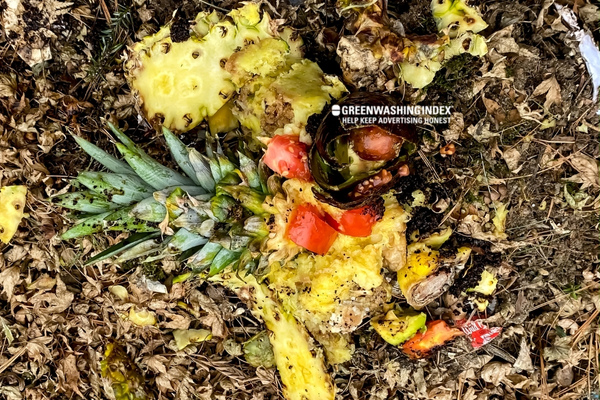
Benefits of Pineapple Composting
Pineapple may seem like only a refreshing tropical fruit to some, but for me, its rinds and core hold latent plant-boosting properties waiting to be unearthed through composting.
- Environmentally Friendly: Beyond diverting organic waste away from landfills, pineapple composting helps in reducing greenhouse gas emissions. Remember how every small action can lead to significant changes? That’s exactly what it does!
- Soil Enrichment: My garden loves it when I add composted pineapple to the soil. It shoots up the nutrient content, giving my plants that extra perky growth spurt they need during their growing stage. Also, it improves soil structure and moisture retention capacity – fundamentals for healthy soils.
- Natural Pesticide: You might not believe this immediately, but yes, composted pineapples work wonders in pest management, too! Earthworms love them, while nematodes and certain harmful microorganisms despise them—giving them natural pesticide properties.
- Cost-Efficient: Honestly speaking, pineapple composting costs virtually nothing (unless you’re buying pineapples solely for this purpose). You’d otherwise need truckloads of store-bought fertilizers that might cause your wallet to cringe!
Therefore, as simple as it sounds – tossing your uneaten or unwanted parts of a pineapple into a composter rather than a trash bin has multifaceted benefits attached that should ideally encourage everyone to adopt such sustainable composting methods.
Can You Compost Pineapple?
Whether you’re new to composting or seasoned in sustainable waste disposal, one question might be nagging you – can you compost pineapple? Let’s clarify that right up front.
Absolutely yes! You can definitely compost pineapple. This juicy tropical fruit and all of its components – the flesh, core, and even the prickly skin – are totally safe for your compost pile.
Composting fruit scraps like pineapples is an excellent way to reduce food waste and contribute positively to the environment. Not only are you recycling organic materials, but you’re also enriching your soil with added nutrients. It’s not only eco-friendly composting at its best, but it’s also a win-win situation for both nature and your garden.
If in doubt about pineapple waste disposal, just remember that it’s an organic material subject to the circle of life. What goes around comes around – from Earth back into Earth!
The Anatomy of a Pineapple and Why it’s Great for Your Compost Pile?
A closer look at the composition of a pineapple shows us why it’s great for our compost piles:
- Rich in Nutrients: Pineapples pack Vitamin C and manganese, among others, which get transferred to your compost pile as they decompose.
- Fiber Galore: Like most fruits, pineapples come with loads of fibers thanks largely to their tough exterior shell (which is perfect for providing ‘brown’ decomposition material).
- High Water Content: At 86% water content, pineapples help keep your compost pile hydrated without making it soggy.
- Acid Factor: Pineapples come with citric acid, which adds value by speeding up microbial activity (those tiny workers who do most of the heavy lifting) during decomposition.
The real beauty when it comes to pineapple composting lies in making use of the entire fruit. Even the parts we don’t consume – think hardcore and spiky skin – are prime materials for organic waste recycling.
So next time you enjoy a slice of pineapple, remember: its journey doesn’t end at your kitchen bin. Instead, it’s off on another beneficial round as part of your compost pile, enriching the soil that may just bear your next crop of garden veggies!
How to Compost a Pineapple?
Composting is an eco-friendly way of dealing with organic waste, and pineapples are no exception. Pineapple composting is a fantastic method for reducing food waste while enriching your garden soil. But where do you start? Keep reading for detailed instructions and tips on how to turn your leftover pineapple into valuable compost.
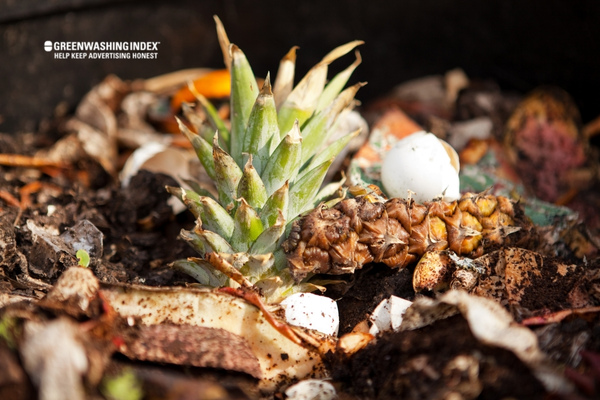
Steps to Successful Pineapple Composting
To ensure that your pineapple composting yields the best results, it’s important to follow these steps:
- Choose an appropriate spot for your compost heap. Choose a location that is easily accessible so you can add scraps easily but also not too close to living areas, as it can attract critters.
- Begin with basic compost materials. Before adding the pineapple, have some dry leaves or other brown matter at the bottom of your compost bin. This will help balance the acidity of the pineapple.
- Prepare your pineapple for composting. Cut up the leftover pineapple, including peels, into small pieces before introducing them into the heap.
- Layer properly in your bin. Add a layer of green material (fruit and vegetable scraps), brown material (dry leaves or newspapers), and then another layer of soil or finished compost.
- Mix well. Stirring speeds up decomposition by allowing air circulation amongst the layers of organic matter.
- Be patient! Let nature do its thing! Depending on several factors, such as temperature, humidity, and mixture composition, full decomposition may take anywhere from two months to a year.
Tips on Accelerating the Pineapple Decomposition Process
While it’s true that patience is key when waiting for those valuable microorganisms to transform our fruit scraps into nutrient-rich soil, there are ways we can help speed up this process:
- Chop it up: The smaller the pieces added to your pile, the quicker they decompose.
- Balance acidity: Pineapple is an acidic fruit. To neutralize this, add coffee grounds or eggshells to your compost pile along with your pineapple waste.
- Turn the compost often: Accelerate decomposition by maintaining air circulation. This can be done by stirring the heap every week.
- Get the right mix of green to brown materials: For optimum composting conditions, maintain a 1:2 ratio of green (kitchen scraps) to brown (garden waste like dry leaves or straw).
Integrating these tips into your pineapple composting process can significantly reduce the time it takes for your scraps to transform into rich, beneficial soil for all your gardening needs. It’s an easy task that contributes significantly toward creating a sustainable living environment. Reducing food waste through eco-friendly composting methods has never been simpler!
The Dos And Don’ts of Pineapple Composting
When you compost pineapple, you add a sweet fruit to the mix. Here are some dos and don’ts to help you do it right.
Do Chop Up the Pineapple: It is good to cut your pineapple into small pieces. This helps it break down faster.
Don’t Put in Whole Pineapples: Big chunks can take a long time to break apart. Avoid putting whole pineapples or large, thick rinds in your compost without chopping them first.
Do Balance with Browns: Have dry things like leaves and paper? Mix them with your pineapple scraps. This balances the wet and dry stuff in the compost.
Don’t Forget to Turn Your Compost: Stir up your compost now and then. It gets air inside, which helps make good soil faster.
Do Keep It Moderated: Only add a little bit of pineapple at a time. Too much can make your compost too acidic.
Don’t Add Diseased Plants or Weeds: If you have sick plants or unwanted weeds, do not put them in with the pineapple. They could spread problems in your garden later.
Do Wear Gloves When Handling Pineapple: Sometimes pineapple can make skin itchy or sore. Wearing gloves when you touch it can protect your hands.
Remember these tips when adding pineapple to your compost, and you’ll make nice soil for growing plants.
Key Rules When Adding Pineapple to Your Compost
Before we start throwing every bit of pineapple waste into our compost pile, we need to understand certain dos and don’ts.
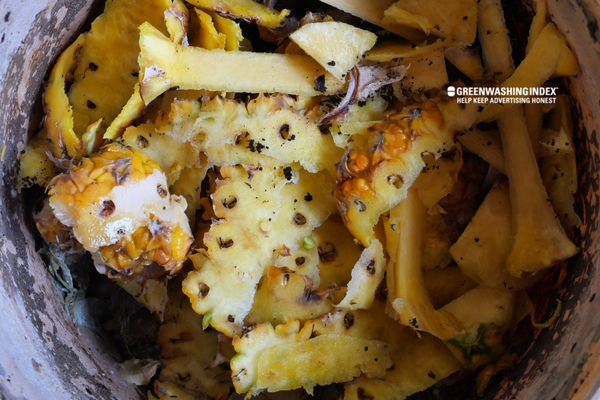
- Cut the pineapple into small pieces. Chop your pineapple scraps before adding them to the compost pile. This action will increase the surface area available for bacteria and other decomposers, speeding up the breakdown process.
- Don’t dump a whole pineapple in one go: A mountain of decomposing pineapples can create large patches in your compost pile that aren’t allowing oxygen in. Remember, balanced composting involves layering green waste (like fruit scraps) with brown materials (like leaves or paper). So make sure you’re balancing your pineapple peels with sufficient quantities of brown material.
- Do use both peels and cores: Every part of pineapple-peeling cores is a great material for eco-friendly composting, but remember, each has different decomposition times due mostly to their structure differences. You should chop each element separately according to their similar sizes before mixing them in.
- Don’t forget about acidity levels: Pineapples can increase acidity levels in certain types of soils because they’re quite acidic themselves! On the other hand, however, if you have an alkaline soil type (less acid), then pineapples could actually be beneficial by helping balance pH levels back closer toward neutral territory, where most plants thrive best!
By following these key rules for adding pineapples to your compost heap, not only are you reducing food waste considerably but also promote sustainable composting methods. Remember, compost is a slow process requiring patience but yielding amazing results in the end. It’s all about getting the balance right and making sure we’re doing our bit for the environment while nurturing our gardens at the same time!
Common Myths about Fruit Peelings in Your Garden
Fruit peels often become the center of many misconceptions when it comes to composting. However, including them in your compost pile can actually be highly beneficial. So why are there so many conflicting viewpoints surrounding these organic treasures? Let’s bust some common myths related to pineapple decomposition specifically and fruit peelings more generally.
Busting Myths Related to ‘Pineapple Decomposition’
One misconception is that pineapples are too acidic for compost piles. While it’s true that pineapples contain citric acid, like all fruits, the concern over acidity is generally overstated.
- Myth 1: Pineapples are Too Acidic for Compost: Many people shudder when considering adding pineapples into their compost piles because they fear its acidity will harm the pile’s balance. This isn’t entirely correct. The fact of the matter is that the decomposition process neutralizes this acidity over time.
- Myth 2: Pineapple Waste Attracts Pests: Another myth about pineapple decomposition surrounds pest attraction. Just like with any fruit or veggie waste, if you do not maintain your compost heap correctly – for instance, by burying fresh scraps under dry browns – pests may become an issue.
- Myth 3: Pineapple Skins Do Not Break Down Easy: Although pineapple skins are indeed tougher than those of other fruits and take longer to decompose fully, they contain valuable amounts of nutrients like Calcium and Magnesium, which enrich your soil significantly over time.
Does this mean I can throw out all my pineapple-related concerns? Not really! While these myths might sound convincing, realistic composting needs care and attention. It requires a proper understanding of what works best in your particular setup:
- Composting Must-Haves: Ensure you have a good mix of green (fruit scraps) and brown (dry leaves, shredded paper) items in your compost pile.
- Turn Your Compost: Stir it up regularly for better aeration, which results in faster decomposition.
- Timely Checks: Regularly monitor the health of your compost pile. Make sure there aren’t any unwanted pests or signs of mold that need addressing.
So next time you munch on some pineapple, remember the peels can be more than just waste! Pineapple composting might have its myths, but understanding how to counter them can help maximize benefits while reducing food waste in a truly eco-friendly way.
FAQs
How long does it take for a pineapple skin to break down in the soil?
Times vary depending on conditions, but typically, pineapple composting can take around two months for the skin to fully decompose in your compost pile. Ensuring the pile is kept moist and turned regularly accelerates this process.
Is there any special preparation required before adding pineapples?
There’s no special treatment required for composting pineapple waste. However, slicing pineapple into smaller pieces before adding it to your compost heap will speed up the decomposition process.
Can we add other fruits along with pineapple to our home compost system?
Yes, absolutely! You can add almost all types of fruit scraps to your home compost system. It’s a wonderful way of reducing food waste and creating nutrient-rich soil enhancers.
Conclusion
Last but not least, pineapple composting is definitely a worthwhile endeavor, not just because it’s environmentally friendly but also because of the unsung benefits it bestows upon our gardens. In the grand scheme of things, small acts like these add up and contribute largely to sustainable living and reduced food waste.
Key Takeaway Points
- Pineapple composting is a valuable tool for sustainable living.
- Pineapples can indeed be composted, but they need to be chopped into smaller pieces for quick decomposition.
- The ecosystem within the compost heap helps break down pineapple quickly.
- Non-compostable parts of pineapple waste need to be disposed of in an eco-friendly manner.

